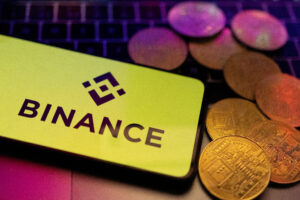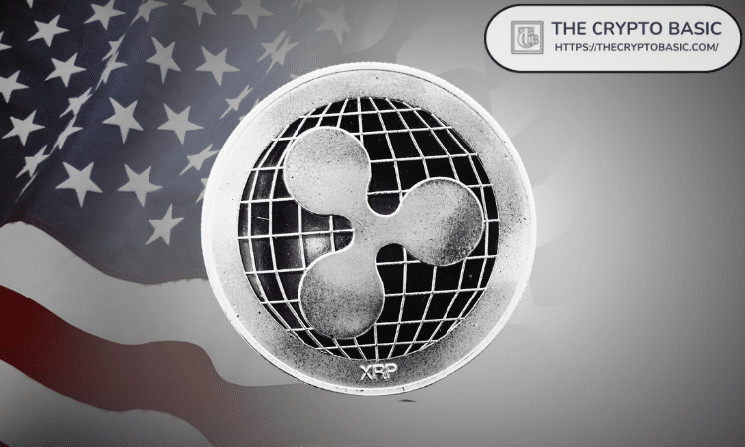FLRMOON’s analysis suggests Ripple could have a major presence in the U.S. financial system via indirect ties to FedNow providers.
The research shows that a large portion of the companies supporting FedNow’s infrastructure have ties to Ripple, either directly or through third-party partnerships. If these connections materialize as expected, the XRP Ledger ecosystem could see a substantial influx of liquidity.
Ripple’s Presence Within FedNow’s Payment Infrastructure
FedNow, launched by the Federal Reserve, looks to modernize instant payments across the United States. The service already has over 1,200 live participants and plans to integrate 10,000 banks and institutions.
While Ripple itself is not officially listed as a service provider, likely due to its ongoing legal battle, FLRMOON’s research suggests that 27 of the 37 FedNow-certified service providers have some level of connection to Ripple.
This indirect involvement comes from Ripple’s business model, which prioritizes integration with software providers and financial service firms rather than individual banks. The approach allows Ripple’s technology to reach a broad network of institutions through third-party providers.
For one, ACI Worldwide, one of the service providers, processes 9% of global SWIFT transactions and 30% of SWIFT payments in the U.S. The company has publicly stated that its infrastructure supports payment schemes that integrate with Ripple’s technology.
Similarly, Alacriti collaborates with The Clearing House, a financial entity composed of multiple Ripple partners. The company also works with AWS, which has an existing partnership with Ripple, and has ties to the U.S. Faster Payments Council, where Ripple plays an advisory role.
Aptys Solutions is another FedNow-certified provider with Ripple connections. The company is partnered with the U.S. Faster Payments Council and Jack Henry, which itself has partnerships with several firms that integrate Ripple’s technology.
Meanwhile, BNY Mellon, a major financial institution, has an even more direct link. Particularly, a former executive at BNY Mellon left the company to join Ripple, and Ripple was involved in discussions with BNY Mellon about launching a digital asset initiative.
A Web of Connections to Ripple’s Technology
Other companies with links to FedNow’s payment ecosystem also have ties to Ripple. C&M Software collaborates with The Clearing House, a group that includes many Ripple-linked institutions.
CGI, a major technology provider, is a known Ripple partner and has worked with major Canadian banks to implement Ripple’s blockchain-based solutions. In addition, COCC, another service provider, is partnered with FIS, which has an established relationship with Ripple.
Further, the FLRMOON team also pointed out that DCI, a partner of the Federal Reserve Bank of Boston, has indirect Ripple ties.
Beyond this, MIT’s Digital Currency Initiative, which collaborates with DCI, runs a Ripple validator node, and Ripple’s Chief Technology Officer, David Schwartz, has been involved in discussions with MIT’s fintech research division.
Additionally, ECS Fin lists Ripple as one of the blockchain technologies supported in its IMS Hub, which facilitates connections to major payment networks.
Finastra, a well-known Ripple partner, has teamed up with the blockchain company to offer Ripple’s payment solutions to financial institutions. Meanwhile, FIS has a longstanding partnership with Ripple and has been involved in various cross-border payment initiatives.
Finzly, another FedNow provider, has Ripple links through its partnerships with AWS, PCBB, Corpay, and Jack Henry—all of which have some form of integration with Ripple’s ecosystem.
Fiserv, one of the key service providers, is connected to Visa and Mastercard, both of which have acquired Ripple-related companies.
Also, Form3, another FedNow-certified firm, works with Barclays, which has previously invested in a startup leveraging XRP. FPS GOLD, a financial software provider, is integrated with Corpay, which consists of multiple Ripple partners.
Meanwhile, IBT Apps has ties to FIS, Fiserv, and Jack Henry, further strengthening the network of Ripple-linked service providers. Jack Henry itself is a major piece in this web of connections, collaborating with multiple FedNow providers that already have Ripple integrations.
In addition, Open Payment Network, a founding sponsor of the Faster Payments Council, works directly with Ripple as part of its advisory team.
Major Payment Giants with Links to Ripple
The FLRMOON team’s research also highlights how Magic Wrighter, another FedNow-certified service provider, is partnered with Fiserv, which has Ripple connections.
Metallicus, which integrates with Fiserv, Jack Henry, and Temenos, is also linked to Ripple through its fintech collaborations. In addition, Narmi, a financial services provider, works closely with FIS, Fiserv, Jack Henry, and COCC, all of which have established Ripple connections.
NetXD, another provider, is integrated with Visa, Mastercard, and The Clearing House. Temenos, an official Ripple partner, collaborates with major financial firms like Accenture, Microsoft, and IBM.
Payfinia, a division of Tyfone, launched the Instant Payment Xchange, an initiative that resembles Ripple’s API-based payment model.
Vertifi Software, another provider, works with Tyfone, Fiserv, and Fintilect, a company that has relationships with FIS, Jack Henry, and the Federal Reserve System.
Meanwhile, Visa has taken an even more direct approach, acquiring two companies—Earthport and CurrencyCloud—that have deep integrations with Ripple’s technology. Earthport, in particular, has been a Ripple partner since 2015 and provides cross-border payment solutions for major banks.
Volante Technologies, which rounds out the list, is a Ripple partner that works with AWS, Microsoft, Swift, Accenture, and Deloitte. All of these firms either support RippleNet or have collaborated with Ripple on payment initiatives.
What This Means for XRPL Liquidity
Essentially, the FLRMOON team’s analysis suggests that Ripple’s technology could become deeply embedded in FedNow’s payment framework without being explicitly listed as a provider.
Since Ripple has structured its business model to integrate at the software and infrastructure level, financial institutions may end up using Ripple’s blockchain solutions through these service providers.
If these connections translate into actual usage, the XRPL ecosystem could see a dramatic increase in liquidity. FedNow’s goal of reaching 10,000 banks means that Ripple’s technology, indirectly embedded in the system, could facilitate trillions of dollars in transactions.
Read the full article here









